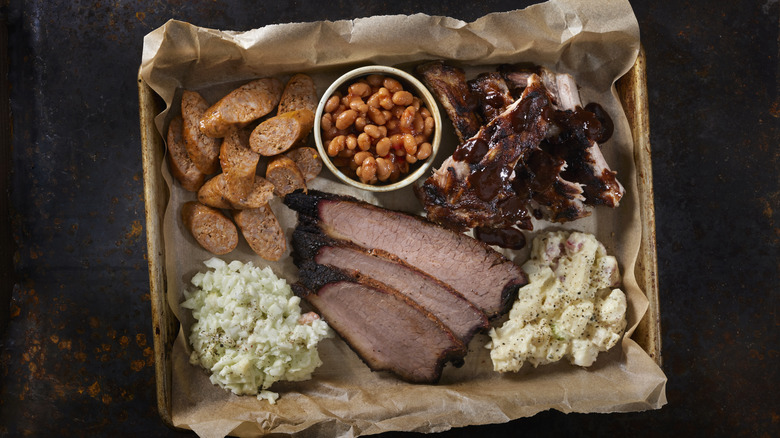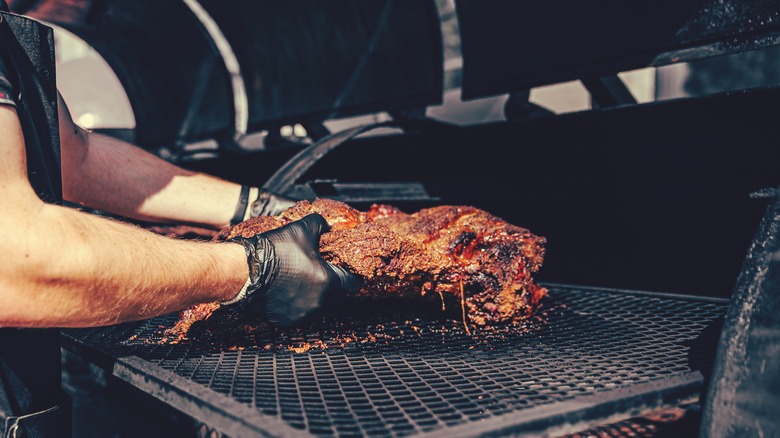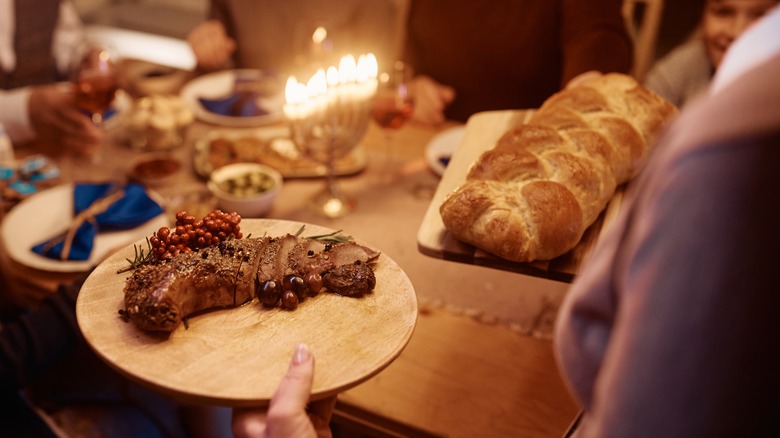Quality Cuts Of Brisket Are Wasted On A Grill
Whether sold at a roadside barbeque joint or served as the centerpiece of a family dinner, brisket is almost always sure to delight. The versatile cut of beef is a delicious addition to almost any meal. However, don't let its delicious taste and tender texture deceive you into thinking that cooking brisket is as simple as tossing it in a pan, or worse yet, the grill. You might be tempted to put your brisket on the grill alongside other cuts of beef, but this would waste the potential of the kosher cut.
The fact of the matter is, that brisket cimple cannot be cooked in the way you would cook other cuts of beef. This is because brisket contains large amounts of connective tissue and fats which, when cooked for short periods at high heat, can make your brisket tough and chewy, as the collagen and connective tissue will not have time to break down and tenderize the meat. Instead, it is best to cook your brisket at a low temperature over several hours. If you are looking for a cut of beef to grill, however, go for a lean cut of steak such as a boneless strip steak or a tender cut of marbled ribeye steak, and leave the brisket for more suitable cooking methods, such as braising and smoking.
For the best results, go low and slow
Brisket is a rather unique cut of beef. Brisket comes from the front, lower pectoral portion of the cow. This area is well-exercised and sees a lot of movement, making the meat naturally tough. Additionally, brisket contains a large amount of connective tissue and collagen which, when cooked quickly and at high temperatures can lead to a rubbery and dry cut of meat. Cooking your brisket at a low temperature, over several hours, however, will help to break down those collagens and loosen connective tissue, leading to a more tender brisket result.
Ideally, you should cook your brisket at a temperature between 225 degrees Fahrenheit and 250 degrees Fahrenheit, though this may vary based on the cooking method. Though general guidance is to cook brisket slowly (so step away from the grill). Other methods, such as smoking brisket, can yield delicious results. And braised brisket is, of course, a classic dish. The essential guidance here is to work with the meat's properties rather than against them. Doing so will help to unleash the full, tender, and delicious potential of your beef.
A brief history of brisket
Though brisket is now a prized piece of meat among pit masters and home cooks, that was not always the case. In fact, because of its tendon and collagen-rich composition, brisket was once considered a cheap and undesirable cut of meat by many. However, this is not to say that there isn't a long and rich history behind the cut. Brisket has been a staple among many Eastern European populations for centuries. The cut was a particular favorite among the Eastern European Ashkenazi Jewish populations. According to My Jewish Learning, the cut of meat was popular in Shtetls, small, predominantly Jewish populations in Europe. This is because brisket was inexpensive, and therefore more affordable to the Shtetl's largely impoverished population. But beyond its cost, brisket is also a kosher cut of beef, as it sits in the front portion of the cow, and therefore was perhaps the perfect choice of beef for many Jewish families.
Brisket is one of many foods brought to America in the 19th century by Eastern European Jewish immigrants, and from its origins as a kosher staple, brisket soon became incorporated into the landscape of American cuisine. Brisket is a staple in barbeque pits, for example, and South Carolina's One Hot Mama's BBQ explains that this is partly due to the influence of Jewish delis in Texas, which often served smoked brisket. In the 1950s, however, Texas barbeque restaurants began serving brisket, a meat that fits in well with the general, slow-cooked ethos of barbeque cooking methods. And the rest, they say, is delicious, slow-cooked history.


